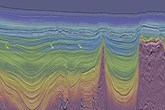CGG awarded long-term 4D imaging contract by Equinor
Published by Isabelle Keltie,
Editorial Assistant
Oilfield Technology,
CGG has been awarded a multi-year contract by Equinor for 4D seismic imaging of multiple towed-streamer and OBC datasets from the Gullfaks field area in the Norwegian North Sea. Equinor’s Gullfaks asset team will analyse the resulting 4D seismic images to optimise recovery and value from the field.
Peter Whiting, EVP, Geoscience, CGG, said: “This new 4D imaging contract testifies to CGG’s close working partnership with Equinor and builds on our longstanding 4D seismic imaging experience in Norway and specifically the Tampen area. Our team in Norway will apply our unique high-end OBS and 4D imaging technologies and expertise to deliver the highest-quality 4D images to improve reservoir monitoring and enhance the asset team’s production management strategies.”
Starting on 1 May 2022, the 4D imaging contract covers the reimaging of nine vintages of towed-streamer data and eight vintages of OBC data followed by repeat imaging of up to three subsequent monitoring surveys.
Read the latest issue of Oilfield Technology in full for free: Spring 2022
Oilfield Technology’s first issue of 2022 begins with analysis from Wood Mackenzie on the disconnect between surging oil prices and US oil production growth and investment. The rest of the issue is dedicated to features covering sand removal technology, dissolvable frac plug technology, digitalisation of offshore operations, annular intervention, oilfield chemicals, subsea compression systems and smart instrument measurement.
Exclusive contributions come from TETRA Technologies, NOV, Archer, Expro, Locus Bio-Energy Solutions, AES Drilling Fluids, MAN Energy Solutions and Winters Instruments.
Read the article online at: https://www.oilfieldtechnology.com/offshore-and-subsea/20052022/cgg-awarded-long-term-4d-imaging-contract-by-equinor/
You might also like
Viridien completes reimaging of BM-S-2 multi-client survey in Brazil’s southern Santos Basin
Viridien successfully completes BM-S-2 seismic reimaging project in the southern Santos Basin.

